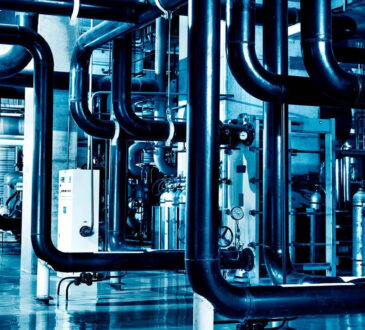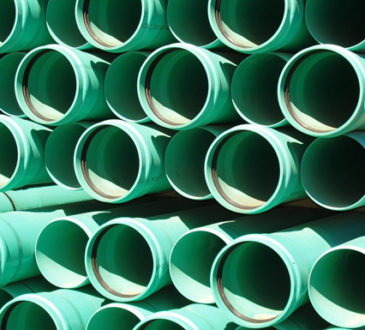
It was only when Gartner added the term Internet of Things (IoT) to its list of new and emerging technologies in 2011 that it began to gain momentum worldwide. By 2021, there will be 21.7 billion active connected devices worldwide, up from more than 117 billion today, or 54 percent, of which IoT devices will be. This means that there are more IoT platforms worldwide than non-IOT devices. One of the most popular new IoT communication technologies is Lora, a short- and long-distance link based on the Lorawan network protocol.
IoT devices are hardware devices such as sensors, gadgets, smart devices and other machines which collect and exchange data over the Internet. IoT devices are not standard computer devices that are connected to a network and have the ability to transmit data, like many devices on the Internet of Things or IoT. IoT involves extending IoT platforms and connectivity from standard devices such as computers, laptops, smartphones and tablets to a range of silly, non-Internet of Things, IoT-enabled physical devices and everyday objects.
IoT is an abbreviation for Internet of Things, and an IoT device is an Internet-connected device that is able to communicate with other devices in a network. In most cases,IoT platforms and devices are connected to a dynamic host, a configuration protocol server that collects IP addresses of devices and is used for network functionality. Embedded technologies in IoT devices communicate with and interact with the Internet.
Depending on the shape and function, IoT devices are able to perform a variety of tasks. Many IoT devices use their Internet connectivity to provide users with access and remote control, access remote databases to retrieve information, use Bluetooth to answer queries, assemble objects based on CAD files, store automated routine tasks, and accept firmware updates from manufacturers.
People also use IoT devices directly through wearable technologies such as smartwatches and fitness trackers, devices that help receive and collect information in real time. This also applies to IoT devices in the home, which are networked, energy-efficient and in operation.
An IoT device is a physical object that senses what is going on in the physical world. IoT devices can be programmed with specific applications or embedded in other IoT platforms. Different IoT devices have different functions, but they have some similarities in terms of how they work.
These physical objects can be converted into IoT devices when they are connected to the Internet to control or communicate information. A light bulb can be switched on and off via a smartphone app, an IoT device can be a motion sensor in an intelligent thermostat in the office or a connected street light.
IoT devices can be as fluffy as a child’s toy or as serious as a driverless truck. As long as a device is able to connect to the Internet and has sensors that transmit data it is considered an IoT platform or device.
IoT devices contain sensors and minicomputers (processors) that act on the data collected by the sensors and machine learning. IoT devices are mini computers that are connected to the Internet and are therefore vulnerable to malware and hacking.
Many IoT devices are connected to the cloud via wired Ethernet or Wi-Fi. Once connected, these devices collect user data and improvements from their service providers. The connection to the Internet enables users and related applications to access the devices and, of course, allows them to command and advance the necessary updates of the device software.
IoT platforms can also be used to enable health monitoring and emergency notification systems remotely. IoT devices range from blood pressure and heart rate monitors to more modern devices that can monitor specialized implants such as pacemakers, Fitbit wristbands and advanced hearing aids.
Also known as IoT, industrial IoT devices collect and analyze data from connected devices, operating technology (OT), locations and people. By combining operational technology with monitoring devices, IIoTs can help regulate and monitor industrial systems.
The IoT consists of several technological layers that play a role in routing and connecting things in IoT devices and building applications that serve a clear purpose, be it a consumer application or an industrial-quality IoT project. IoT platforms and technologies can be multiple, of course, but the most important one depends on the destination. Sensors and actuators show how IoT technologies fit into IoT technology stackIoI devices.
A growing number of IoT devices are being developed for consumer use, including connected cars, home automation, wearable technologies, connected health devices and remote monitoring capabilities. Internet of Things (IoT) devices support the expansion of the Internet of Things beyond connections to standard devices such as computers, laptops and smartphones. These devices integrate with high definition technology and enable them to communicate and interact with the Internet, as well as manage the necessary controls.
It depends on two things that turn a normal device into an intelligent IoT platform. First, the device must have integrated technology (sensors, functional software, built-in technology, support for network connections and actuators).
The Internet of Things (IoT) refers to billions of physical devices around the world that are connected to the Internet to collect and share data. IoT devices include converters such as sensors and actuators as well as a variety of objects referred to as Smart, Smart, simply old, connected smart light bulbs, connected valves and pumps, connected electricity meters, connected cars, smart and smart buildings, components of smart home devices, etc. A “Things” device is a sensor that represents the first stack layer of IoT technology.
According to a Gartner report, the number of connected devices increased over 2015 in 2016 compared to 2015, with 6.4 billion IoT platforms entering the Internet of Things. Thanks to the advent of super-cheap computer chips and the popularity of wireless networks, it is now possible to turn small pills into large airplanes as part of the Internet of Things (IoT), by connecting different objects, adding sensors to them and adding a degree of digital intelligence to devices that were once mute, enabling them to communicate with data in real time without using humans. The Internet has made the fabric of the world around us more responsive, merging the digital universe with the physical.
At the moment, there is a lot of noise around the Internet of Things (IoT) and its impact on the way we travel, shop and how manufacturers track inventories.
In short, the Internet of Things (IoT) is a concept that connects devices as they switch between the IoT and other connected devices. It is a huge network of connected things and people who collect and share data about their use and the environment around them.




